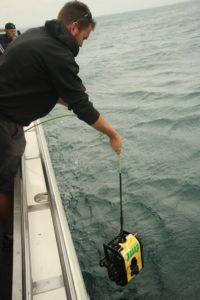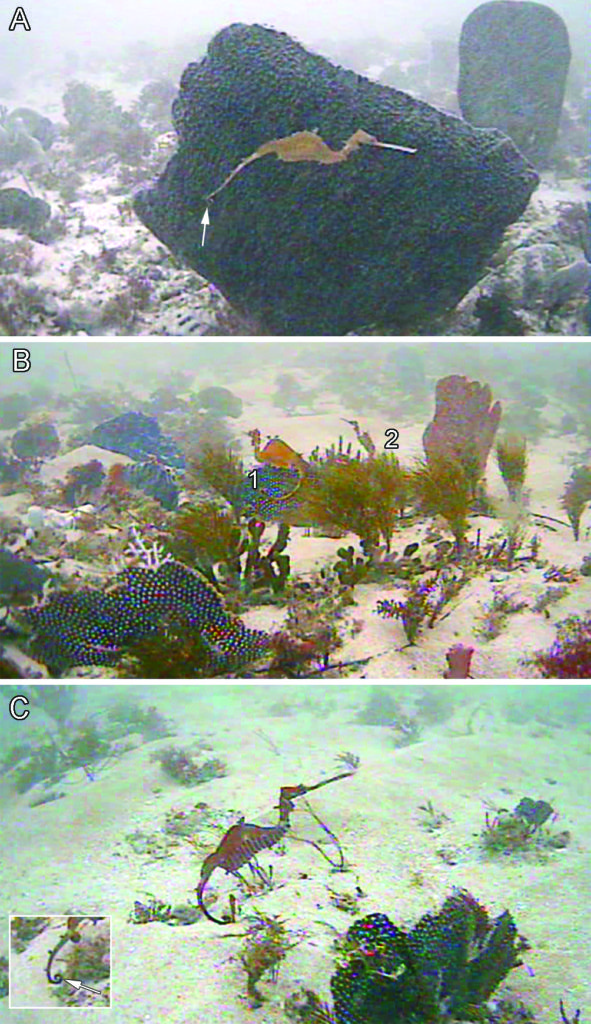
Having never been seen in the wild before, the ruby seadragon was only identified in 2015 by researchers at Scripps Institution of Oceanography and the Western Australian Museum who used four specimens from museum collections. These were previously misidentified as common seadragons.
In April 2016 the researchers explored the Recherche Archipelago in Western Australia to obtain the first live observations. They used a remotely operated vehicle with a low-light video camera to obtain the below video of a live ruby seadragon which lives at depths of 50 meters; much deeper than its closest relatives, the leafy seadragon and the common seadragon, which live at depths of 3-25 meters.
The ruby seadragon also lacks the distinctive leaf-like appendages of the common and leafy seadragons which are used for camouflage in sea grass and kelp meadows in which they live. The researchers suggest that living in a sparser and darker environment, the ruby seadragon can rely on its red coloring for camouflage.

Another surprising and unique feature that can be seen in the video is the ruby seadragon’s prehensile tail. This might be used to prevent individuals from being swept away by strong sea surge by gripping on to objects.

Despite these fascinating observations there still remains a lot to be discovered about the newest member of the seadragon group such as how wide spread its distribution is and whether it faces any threats.
You can read more about the expedition on the researchers’ blog “Hunt for the Ruby Seadragon”
Video credit: Scripps Institution of Oceanography/UC San Diego
Comments